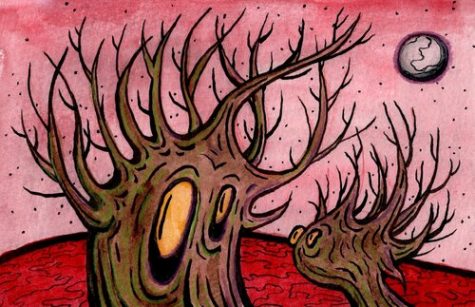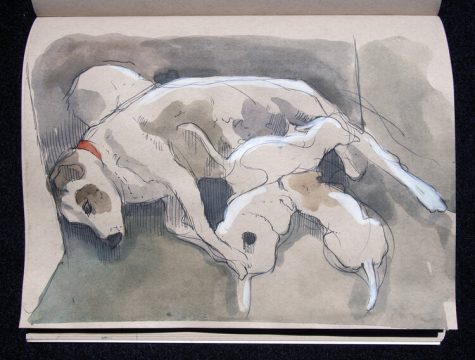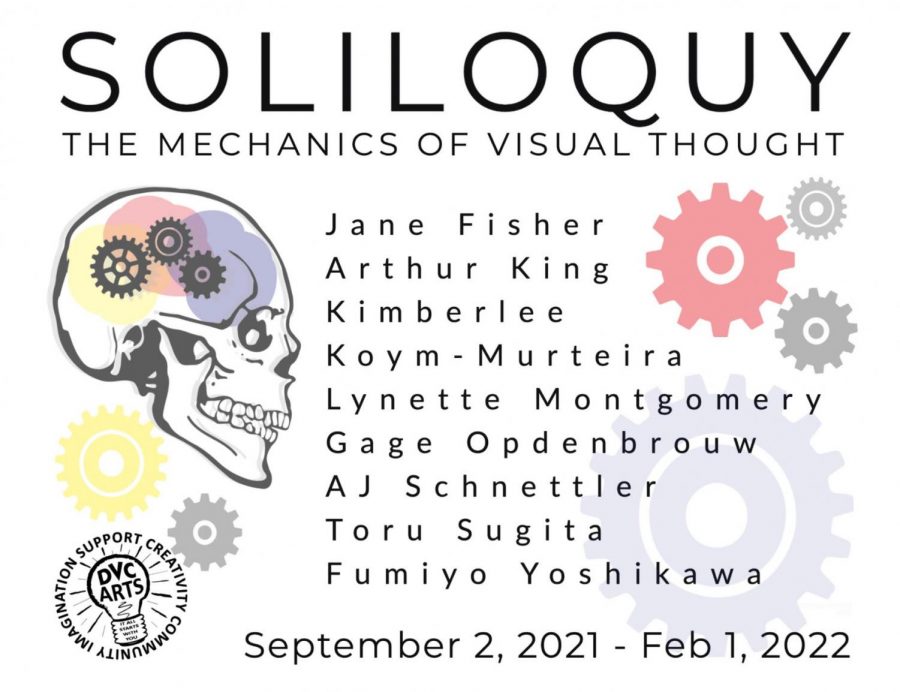In New Exhibit “Soliloquy,” Artists from DVC and Beyond Reflect on the Creative Process
October 6, 2021
When you hear the term “soliloquy,” perhaps you think of a passionate speech in a play by William Shakespeare, or someone delivering a lengthy discourse before a crowd. What you’re unlikely to consider would be visual art – could that be imagined as a form of soliloquy as well?
This question is posed in a new show that opened last month at Diablo Valley College, entitled “Soliloquy: The Mechanics of Visual Thought,” running through Feb. 1, 2022, which seeks to explore the complex creative process behind artistic creation.
According to longtime DVC art instructor Arthur Scott King, who coordinated and curated the show, the theme of the exhibit is illustrated in a quote by the renowned English artist and writer Michael Ayrton, who said: “The process of putting the visual intelligence into action, the very mechanics of visual thought… is the process by which the artist makes clear to himself/[herself], and not to the spectator, what [s]/he is doing. It is a soliloquy before it becomes communication.”
King said he wholeheartedly agreed. The artwork and individual pieces in the show “[aren’t] about the one perfect image,” he said, but are “about the fifty images that led up to them.”

Ordinarily, the gallery would be open in-person on DVC’s Pleasant Hill campus, but between COVID-19 concerns and the ongoing construction of a renovated art complex, faculty decided to hold it online at https://dvcartgallery.com/.
“Soliloquy” features a mix of work by current DVC faculty members and outside artists. Among the artists employed at the college, Jane Fisher has exhibited her work nationally. Other featured artists working at DVC include Kimberlee Koym-Murteira, Lynette Montgomery, AJ Schnettler, Toru Sugita and King.

Artists from beyond DVC include San Francisco-based painter and woodworker Gage Opdenbrouw, and Kyoto-born Fumiyo Yoshikawa, who specializes in Nihonga, or Japanese painting.
King said current and former DVC students will have a chance to showcase their works at the gallery in Spring 2022. To be considered for the opportunity, artists need to submit a gallery show proposal through the DVC link at the bottom of the art gallery home page.
According to King, who has been teaching art and digital media at DVC for more than two decades, anything that gets created is necessarily shaped by its surroundings. Artwork and other forms of creative expression are no different, he said.
The environment in which the individual lives invariably affects the work, whether it is consciously recognized or not. The pandemic had added a new dimension to people’s creative process and their work, King added.
“While we were in lockdown, artists were trapped in their studios, and many were given an opportunity to look within and analyze their process and view other themes and concepts,” he said.
Fisher had previously told The Inquirer that “all the artists [she knows] are ready to go back to real galleries” to exhibit their work, and King echoed that sentiment.
For the time being, that’s not happening, and King acknowledged some of the difficulties of presenting an online show. But there were also key benefits, he said, such as the opportunity to present an easily accessible variety of media to a broad, remote audience, and the potential to give media students and future digital artists considerable exposure.
Virtual exhibits like “Soliloquy” also open up the possibility to integrate the online gallery into a physical setting in the future.
Despite current frustrations and uncertainties facing artists who seek to exhibit their work, the show must continue because the creative process never stops, added King.
He referenced the Mural Movement in Chicago, where artists connected with store owners who had boarded up their windows and painted racial justice-related murals in response to the George Floyd protests. The will toward creativity and self-expression goes on, said King, through all kinds of adversity.
“The human nature is to be creative and expressive,” he said. “It cannot be silenced.”






































































